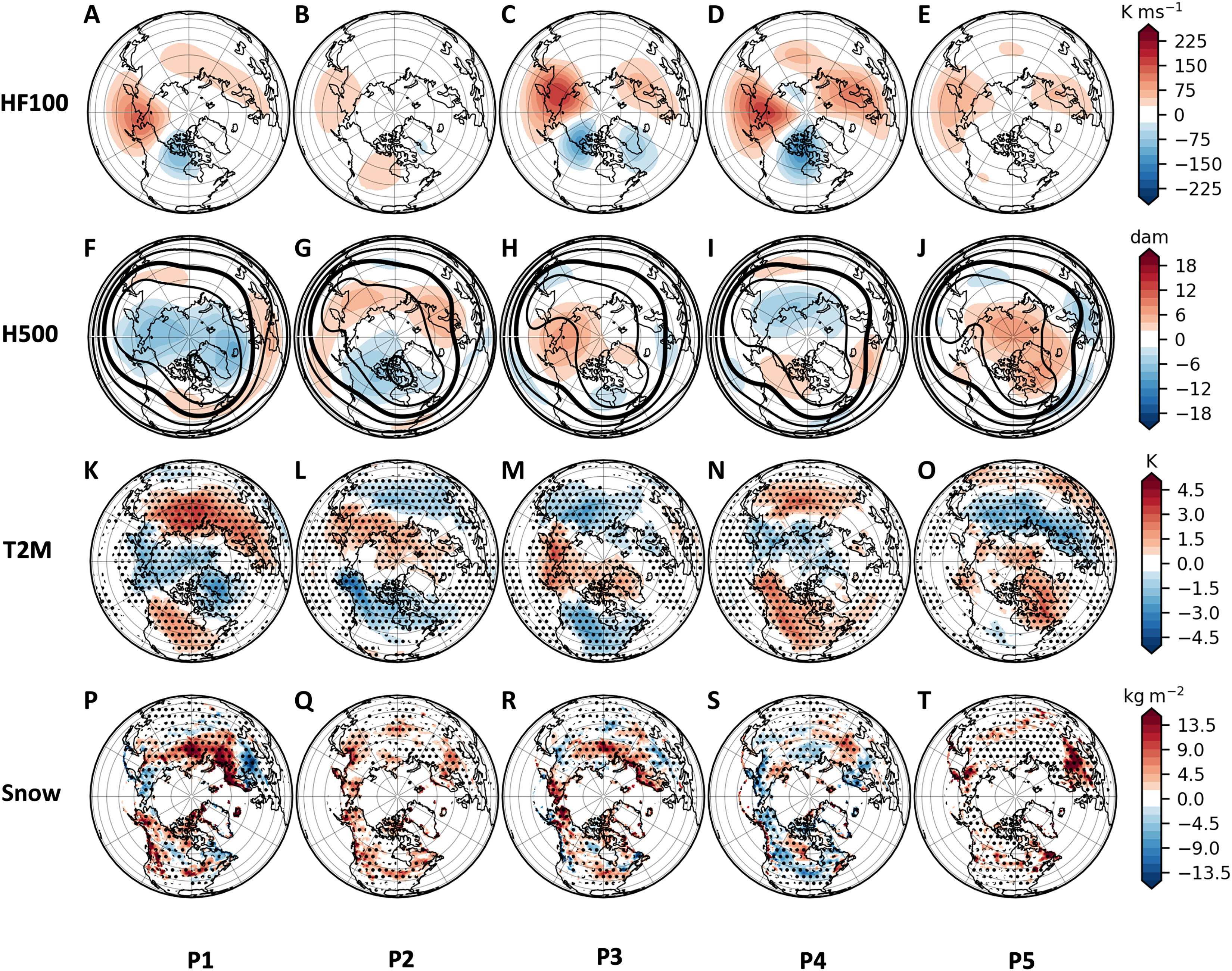Two newly identified patterns in the stratospheric polar vortex can send cold air over North America to cause extreme cold snaps, but the parts of the country that suffer differ between them.
Those keen to halt climate action will seize on any cold spell, no matter how brief and local, as evidence against worldwide trends. Often, the events chosen are just normal variation that feels cold against a hotter background. However, it is true that some cold snaps have occurred in recent years at mid-northern latitudes that are statistically out of the ordinary.
Disruptions to the stratospheric polar vortex have been proposed as the cause of these events, but that explanation has come in for some challenge. A new study provides evidence the vortex’s behavior is indeed responsible, and this can occur in more ways than previously recognized.
The polar vortex is a river of extremely cold air that swirls around the Arctic stratosphere. Since the stratosphere in general seldom gets above freezing and the Arctic is particularly cold, and air in that location will be frigid to an extent we never experience at ground level. However, the vortex usually acts to contain this cold air comfortably far from us.
As long as the vortex keeps to its usual course humans are unaffected, but it has previously been established that waves in the lower atmosphere can push warm air upwards, causing sudden stratospheric warmings (SSWs). These can send portions of the vortex south and bring bursts of deep cold to continental mid-latitudes.
Although these cold bursts are often referred to as “polar vortex events” or similar names, the vortex is permanent; it’s deviations in its shape that cause the icy blasts.
Dr Laurie Agel of the University of Massachusetts Lowell and co-authors looked at the behavior of the vortex prior to extreme cold spells in North America this century. They found that in addition to SSWs, the cold snaps could be triggered by the vortex becoming “stretched” from Eastern Asia to Western North America. Another key feature leading to outbreaks of cold is differences in shape and strength of the upper and lower parts of the vortex.
When these occur, displacements of the vortex towards western Canada or the North Atlantic mean trouble to come. The former pattern, which the team call P2, sends cold air toward western Canada and the north-western United States. The latter (P3) pushes the cold over central and eastern North America.

Figure 2 from the study, showing patterns of heat flux in the lower stratosphere and troposphere.
As the cold air dissipates, the predominantly westerly winds carry less extreme versions of the cold to areas further east. The Texas deep freeze of 2021, which caused extensive economic damage and came close to a catastrophic meltdown of the electricity grid, was the product of a vortex-driven cold snap to the north west.
Changes over the last decade mean that the most extreme deviations from normal winter weather are now occurring west of the Mississippi, having previously been to the east. The authors are uncertain whether this represents a long-term trend, or a temporary anomaly caused by shifts in the El Niño/La Niña cycle.
The polar vortex is ancient, and disruptions have probably occurred throughout history. However, the authors found P2 has become so common that the northwestern USA has become colder in winter since 2015, even while annual temperatures have risen there as well as around the globe.
“Climate change doesn’t just mean warming everywhere all the time. It also means more complex and sometimes counterintuitive shifts in where extreme weather shows up,” the authors note in a statement.
It is suspected that the vortex has become more erratic as a consequence of loss of sea ice on the Arctic Ocean. If so, we can expect these winter cold spells to become more frequent as the world warms. The good news, however, is that understanding the vortex behavior that precedes such events will improve forecasting so individuals, and infrastructure managers, can make preparations.
The study is published open access in Science Advances.
Source Link: Polar Vortex Patterns Explain Winter Cold Snaps Against Background Warming Trend